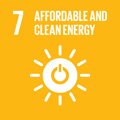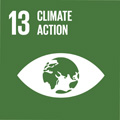- Docente: Vanes Poluzzi
- Credits: 3
- SSD: BIO/14
- Language: Italian
- Teaching Mode: In-person learning (entirely or partially)
- Campus: Bologna
-
Corso:
First cycle degree programme (L) in
Applied Pharmaceutical Sciences (cod. 8518)
Also valid for First cycle degree programme (L) in Applied Pharmaceutical Sciences (cod. 8518)
Learning outcomes
At the end of the course the students will know:
the main pollutants and/or toxic substances of the air, their origin and their formation processes ;
the principal sampling and analysis methods of the pollutants/substances in the air;
the sources of pollutants emission;
the main laws regulating the atmospheric pollution.
Course contents
Main thermodynamic principles, cinetic chemistry and reactions at the equilibrium:
Principal aspects of chemistry ancd Physics of the atmosphere;
Reference laws for atmospheric pollution;
Primary and secondary pollutants: nitrogen oxides, sulfur oxides, carbo monoxide, ozono and its precursors, aerosol of different sizes, polycycilc aromatic hydrocarbon, benzene and its homologous, heavy metlas.
Pollution of the troposhere with anlysis of different foramation and development conditions;
Emission inventory with reference to the sources: industries, vehicular traffic, civil heating, agriculture activities, long range trasnport;
Principal measure units of concentration of susbtances in air;
Main sampling, analysis and measures techniques of the substances in air;
Mathematical models for the simulation of the concentration os sustances in atmosphere;
Indoor air pollution: main substances
Readings/Bibliography
Slides of the lesson, prof. Vanes Poluzzi
Chimica Ambientale - Colina Baird, Michael Cann - Zanichelli
Teaching methods
The course is organised with frontal lessons.
Assessment methods
The final test (exam) aims to evaluate the reaching of the educational objectives:
-knowledge of the main aspects of the atmosheric pollution with particular regard to the chemistry of the toxic substances and, more in general, to the compounds requested by the laws;
-knowledgge of the main sampling and analysis techniques to detemine the concentrations of the toxic substances or pollutants in air (indoor and outdoor);
-knowledge of the influence of meteorological parameters on the behaviour of the atmospheric pollutants;
-Basic elements of mathematical models to simulate the concentration of the substances in air.
The exam will be, normally, oral. If the students will be in high number the exam could be written.
Teaching tools
The educational material used in class will be made avaiable to the students in electronic format;
To have it ask to:
Office hours
See the website of Vanes Poluzzi
SDGs



This teaching activity contributes to the achievement of the Sustainable Development Goals of the UN 2030 Agenda.
